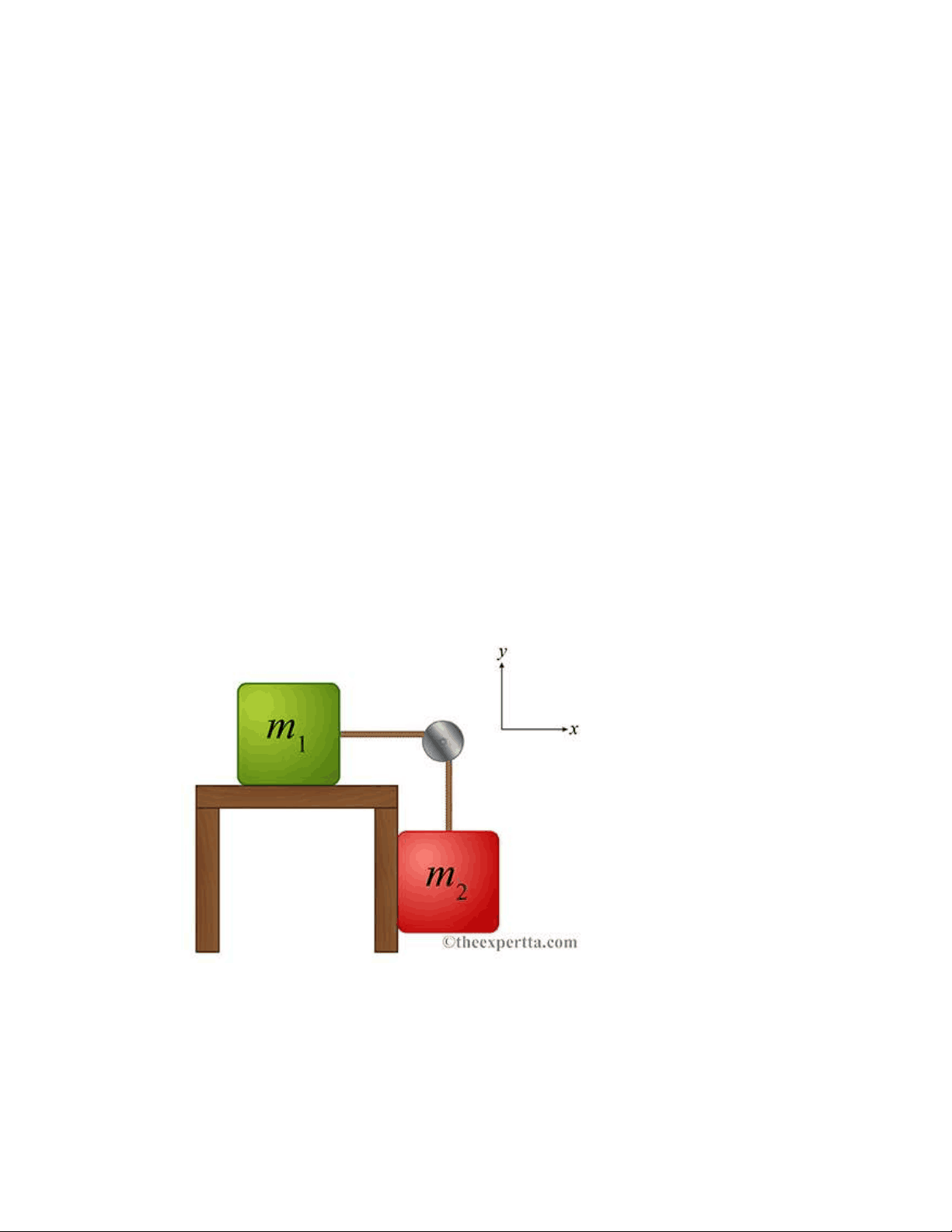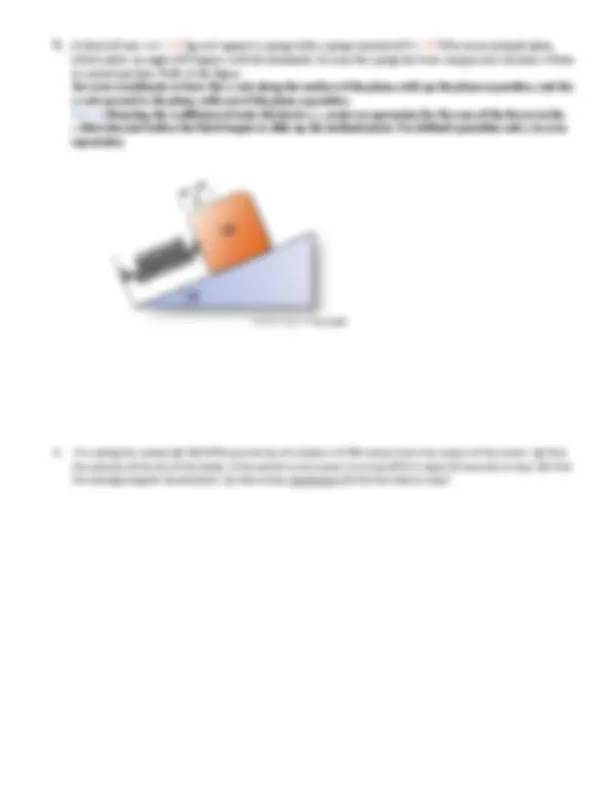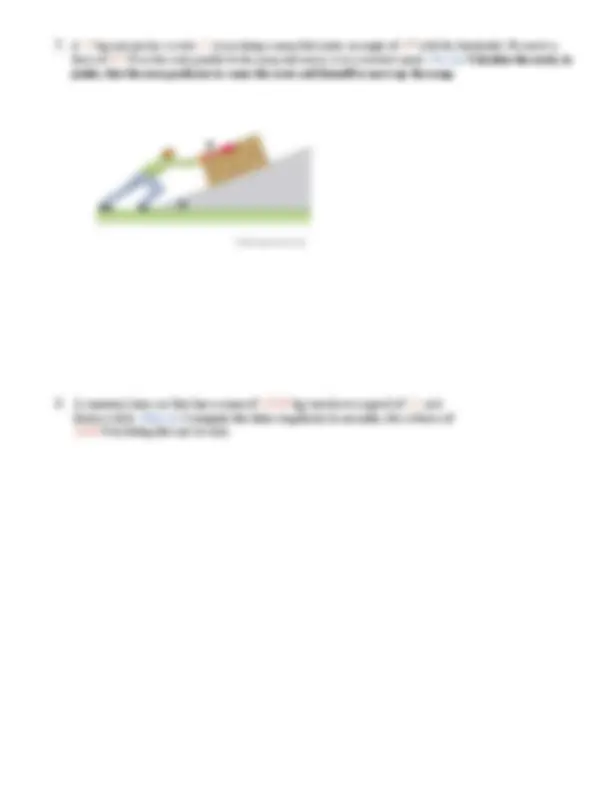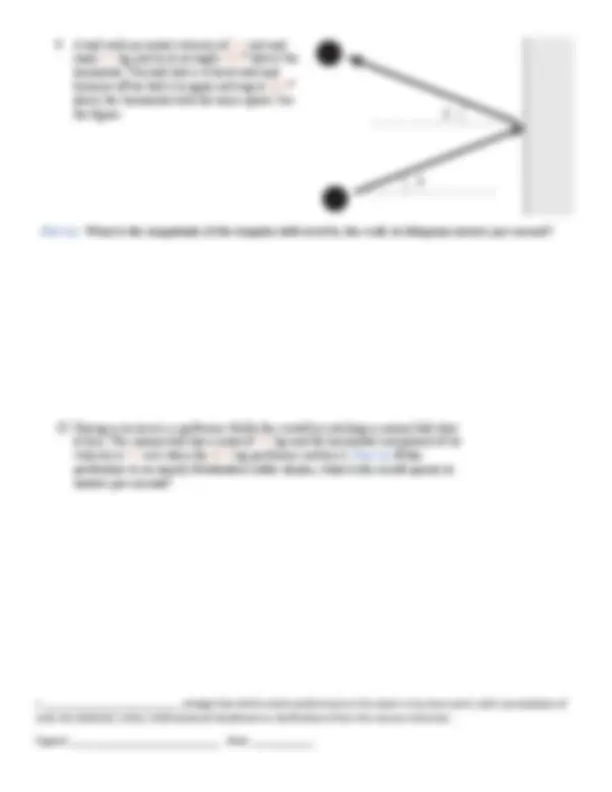





Study with the several resources on Docsity

Earn points by helping other students or get them with a premium plan


Prepare for your exams
Study with the several resources on Docsity

Earn points to download
Earn points by helping other students or get them with a premium plan
Community
Ask the community for help and clear up your study doubts
Discover the best universities in your country according to Docsity users
Free resources
Download our free guides on studying techniques, anxiety management strategies, and thesis advice from Docsity tutors
test includes ten questions in physics I with Gerald Votta. Acceleration, force power, Fan, and other examples given
Typology: Exams
1 / 5

This page cannot be seen from the preview
Don't miss anything!




angle θ above the horizontal as shown. Assume that the coefficient of static friction for ice on ice is 0.0300, and the coefficient of kinetic friction for the same is 0.0100. Let to the right be the positive x direction and up be the positive y direction for your equations. Part (a) Enter an expression for the net force in the horizontal direction, Σ F x. Part (b) Enter an expression for the net force in the vertical direction, Σ F y.
Part (b) What is the linear speed (in m/s) of its tip at this angular velocity if the plane is stationary on the tarmac? Part (c) What is the centripetal acceleration of the propeller tip under these conditions? Represent your answer in meters per second squared.
force of 475 N on the crate parallel to the ramp and moves it at a constant speed. Part (a) Calculate the work, in joules, that the man performs to cause the crate and himself to move up the ramp.
I, ________________________ , pledge that all the work performed on this exam is my own work, with consultation of only my textbook, notes, mathematical handbook or clarifications from the course instructor. Signed: ___________________________ Date: ___________